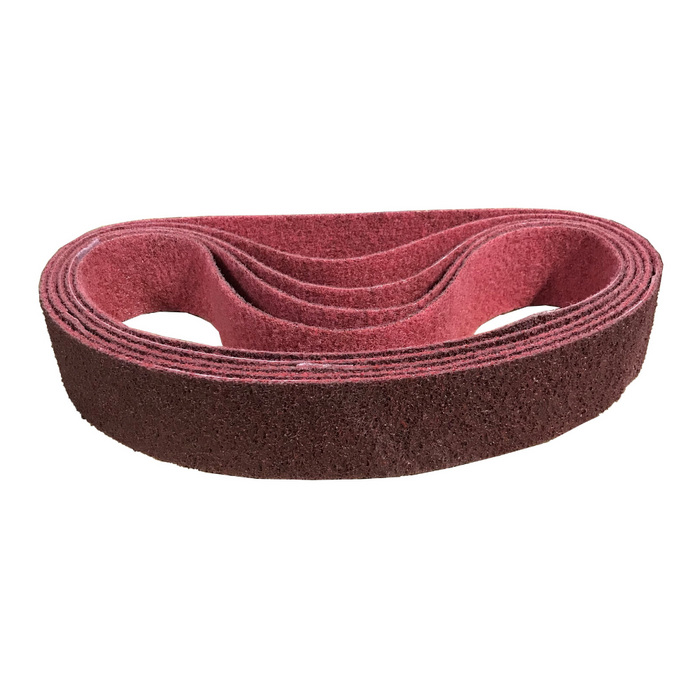
3M SC-BS SCOTCHBRITE™ SURFACE CONDITIONING BELT - 40 X 657MM X AMED MAROON
- 40 x 675mm size
- Non-woven, surface conditioning belts clean, blend, deburr and finish
- Reduced loading and heat build-up allow extended operating time and consistent surface conditioning results
- Reinforced backing and non-woven open web material provides superior flexibility for detail work, over contours and edges
- Removes surface imperfections, grindlines, mill, and other marks
- Hook and loop attachment system provides fast disc change-out for multi-step finishing processes
Use durable Scotch-Brite™ Surface Conditioning Belt for low stretch applications such as cleaning, blending, deburring and finishing all types of metals. Our belts are built to last, comprising of resin-reinforced non-woven fibre that resists loading, also under-cutting or gouging the work piece. They use coarse grade aluminium oxide abrasive, which cuts fast for the duration of the belt, while maintaining superior edge durability. All these belts are suitable for low stretch applications. We’ve also included a woven fabric (scrim) in our conditioning products, embedded in the nylon structure, for additional strength and durability in edge work, deburring and efficient blending of all metal types. The non-woven material combined with abrasive grain is an ideal way to add a great finish, or to remove burrs. Our Scotch-Brite SE Surface Conditioning belts use coarse grade aluminium oxide abrasive, which offers a fast cut-rate and long life. This mineral is a tough, durable abrasive that continually self-fractures during use, to expose fresh cutting edges. By comparison, traditional abrasives, such as garnet, quickly wear down with use. Aluminium oxide abrasive cuts fast, with hardness, strength and low heat retention, making it suitable for a variety of substrates and ideal for grinding, sanding and finishing. Belt sanders are used for rapid grinding, sanding and finishing on a variety of surfaces. Depending on the material being worked, sanding wheels and discs may clog, quickly making them less efficient, while belt sanders continue to sand without clogging because small grooves in the abrasive belt open as they go around the arc of the drive wheel.
